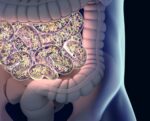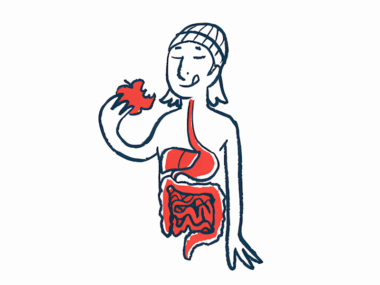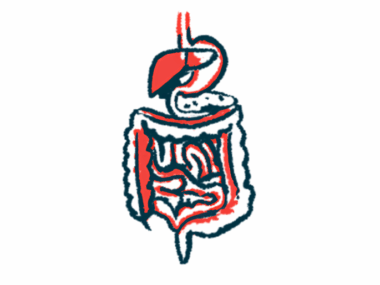ATH434 Eases Constipation, Other GI Symptoms in Mouse Model
Written by |

An investigational therapy, ATH434 was able to reverse some gastrointestinal problems in a mouse model of Parkinson’s disease, according to its developer Alterity Therapeutics.
“Practicing clinicians are well aware of the substantial impact that these symptoms have on the quality of life of individuals with Parkinson’s disease,” David Stamler, MD, CEO of Alterity, said in a press release.
“We are currently conducting additional preclinical studies to evaluate the potential of ATH434 for the treatment of PD [Parkinson’s disease] and look forward to advancing it into a future proof-of-concept study” in people, he added.
The study “ATH434 Reverses Colorectal Dysfunction in the A53T Mouse Model of Parkinson’s Disease” was published in the Journal of Parkinson’s Disease.
Besides motor symptoms, Parkinson’s is characterized by non-motor symptoms, which include gastrointestinal issues like difficulties in swallowing, delayed stomach emptying, slower nutrient absorption, and severe chronic constipation.
Certain symptoms, like constipation, are known to precede by decades the onset of motor symptoms, and are linked with a poorer quality of life.
Studies suggest that gastrointestinal complications arise as a result of damage in the enteric nervous system (ENS), a network of nerve cells that independently regulates the gastrointestinal (GI) tract and sends signals to the brain. This damage is due to the accumulation of the alpha-synuclein protein.
Common treatments for constipation have proven ineffective in Parkinson’s patients.
ATH434 is a small orally administered molecule designed to inhibit the aggregation of alpha-synuclein. In a mouse model of Parkinson’s, treatment with ATH434 for four months prior to the onset of motor symptoms was reported to improve motor function and lessen abnormal alpha-synuclein clumps by redistributing labile iron in the brain.
Labile iron includes all forms of iron found within cells that are not associated with proteins. Known for its toxic potential, these forms of iron have been linked with mechanisms promoting the development of several neurodegenerative disorders, including Parkinson’s.
Researchers investigated whether ATH434 could also lessen non-motor symptoms, such as GI dysfunction, in an animal model of Parkinson’s.
They used the A53T mouse model, in which animals are modified to produce A53T alpha-synuclein, a mutated form of the alpha-synuclein protein associated with the disease in people.
This mouse model recapitulates motor-symptoms, such as poorer mobility, but also develops GI problems at around 15 months of age, which continue to worsen with disease progression.
The researchers conducted two sets of experiments to assess the potential of ATH434 given as a therapy — one after the onset of GI symptoms, and another administered before their onset as a potential preventive treatment.
A first set began with giving A53T mice and normal (wild-type) mice at around the age of 15 months — after onset of GI symptoms — ATH434 (30 mg/kg/day) or a placebo solution for four months.
In a second experiment set, done to evaluate ATH434’s potential as a preventive therapy, A53T mice were either fed the treatment or a placebo for three months starting at around 12 months of age.
Researchers assessed several parameters of GI function, including colonic propulsion (the speed by which digested food — now stool — is propelled through the colon, a part of the large intestine) and whole gut transit. Motor coordination and balance were also evaluated at treatment’s end.
Results showed that ATH434 administered after the onset of GI symptoms significantly improved colonic propulsion — allowing contents to move more quickly through colon — and to be expelled as stool in the A53T mice compared with mice in this model given the placebo.
Colonic propulsion gradually improved with ATH434, the researchers called it a “progressive effect,” with the strongest benefits seen after the full four months of treatment.
ATH434’s use after three and four months also significantly reduced whole gut transit time in A53T mice, compared with untreated animals in the model. ATH434 had no effects in WT mice that served as controls.
Treated A53T mice showed motor impairments compared with healthy mice, but ATH434 was unable to reverse “established motor deficits when applied from [age] 15 months,” the researchers wrote.
As a preventive therapy, ATH434 was administered for a total of three months before the onset of GI symptoms (starting at 12 months of age).
Better colonic propulsion was evident in mice fed ATH434 for three months (and now age 15 months), compared with A53T mice on placebo for three months. However, no effect was seen on whole-gut transit between these groups and, again, treatment failed to reverse motor symptoms.
The researchers then analyzed the mice’s intestinal tissue, specifically the ileum (final section of the small intestine) and the colon, at the end of ATH434 treatment.
They looked for signs of enteric nerve cell stress, as shown by the migration of the Hu protein from the nerve cell’s body to its nucleus (translocation). This protein is an indicator of neuronal stress in the enteric nervous system.
Compared with healthy mice, no difference in nuclear Hu translocation was found in the ileum of the A53T animals. In this tissue, treatment with ATH434 had no impact on nuclear Hu translocation between the groups of mice.
In the colon, all A53T mice had significantly greater nuclear Hu translocation compared with healthy animals. This translocation was also significantly reduced in mice treated with ATH434.
Among A53T mice treated before the onset of GI dysfunction (preventive therapy group), ATH434 significantly reduced the number of neurons with nuclear Hu translocation in the ileum but not the colon.
A trend for greater alpha-synuclein accumulation in A53T mice was seen relative to healthy mice, both in the ileum and colon, but this difference was not significant. Treatment with ATH434 seemed to reduce this protein’s accumulation in the colon of A53T mice, but not significantly.
In A53T mice treated before GI dysfunction onset, ATH434’s use had no effect on the proportion of alpha-synuclein accumulation in either the ileum or the colon.
These results suggest that “ATH434 can reverse some of the GI deficits and enteric neuropathy [disease] that occur in a mouse model of PD, and thus may have potential clinical benefit in alleviating the GI dysfunctions associated with PD,” the researchers concluded.






